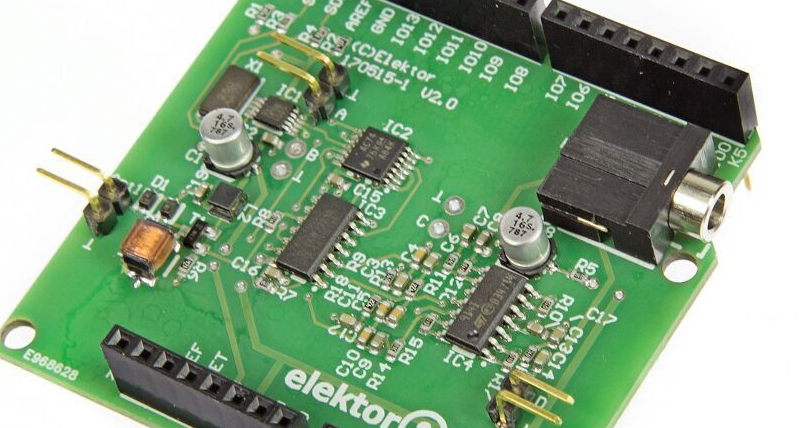Microcontrollers tend to consume other kinds of electronics. A project you might once have done with a 555 now probably has a cheap microcontroller in it. Music synthesizers? RC controllers? Most likely, all microcontroller-based now. We always thought RF electronics would be immune to that, but the last decade or two has proven us wrong. Software-defined radio or SDR means you get the RF signal to digital as soon as possible and do everything else in software. If you want an introduction to SDR, Elektor now has an inexpensive RF shield for the Arduino. The Si5351-based board uses that oscillator IC to shift RF signals down to audio frequencies and then makes it available to the PC to do more processing.
The board is available alone or as part of a kit that includes a book. There’s also a series of Elektor articles about it. There’s also a review video from Elektor about the board in the video, below.
We peeked at the schematic and the shield is more for letting the Arduino control the radio by changing the oscillator frequency rather than performing the SDR functions. The IQ signals appear on the PC’s soundcard via a microphone or line-in jack, and don’t really route to the Arduino.
That’s a shame because some of the 32-bit Arduinos might be able to do some interesting things with the right hardware. Plus there are many capable CPU and FPGA boards that have Arduino shield-compatible layouts. That could have led to some interesting possibilities.
Then again, having a programmable signal source on the Arduino isn’t a bad thing and compared to the older version of the board, the new board offers easier breakout for the oscillator signals.
If you want to learn more about how SDR works, try starting with spreadsheets. However, if you want to graduate to something more practical, try our series on GNU Radio.
















It would be very well possible to do SDR processing in the atmega328. Example here: https://gist.github.com/threeme3/dc6e02a3a1c2ba49e717ac622719e720
This is hackaday right? With two jumper wires you can easily modify this module to output the I and the Q to any pins on the board. It even has I/Q broken out. (see last image on this page https://www.elektor.com/elektor-sdr-shield-2-0-module-170515-91)
I was thrown a little when I read “RF shield”
The shield contains a Si5351
And a “Tayloe” IQ RF mixer which is essentially a high speed digital switch like a FST3125 or FST3253
This circuit has been around for 15 years and was originally used a PIC which was programmed in assembly …..
It’s a good circuit with a high dynamic range *IF* you feed it into the line inputs of a high end (Professional Recording) sound card ,,,,, However plugging it into a microphone jack defeats the purpose because the dynamic range is crap plus you really need stereo inputs and microphone jacks are mono ….
“Inexpensive” at €49.46?
Run, don’t walk, to qrp-labs.com and pick up their $25 qrp-labs.com/receiver and $7.75 qrp-labs.com/synth
True, it’s not a plug-on shield, and you are required to know which end of the soldering iron to hold, but you’ll end up with a far superior receiver and probably learn a lot more along the way too.
All of QRP-Labs software is closed-source and proprietary.
There are better choices out there.
True, many of their products ship with firmware already loaded, and they habitually release only precompiled updates (for their own good and well-documented reasons). But the hardware is well engineered, inexpensive, and usually pretty well documented, so have at it yourself.
However, this receiver uses no software, and this synthesizer module has source code on their website.
The old version Elektor 05/07 SDR works really nice. It’s a shame this one doesn’t come presoldered, and this is a very steep price for a kit (with smd parts).